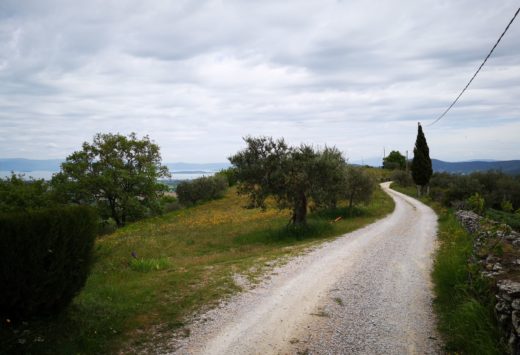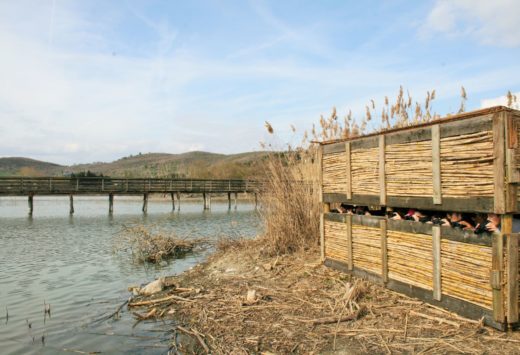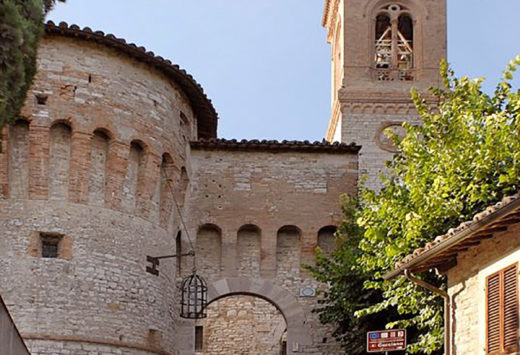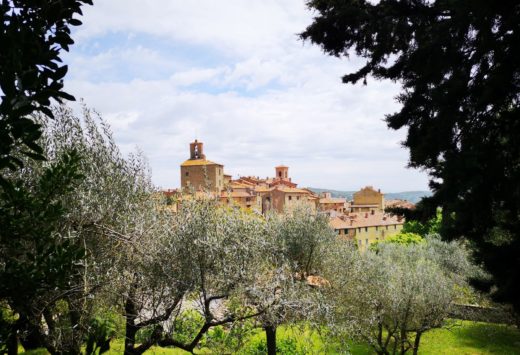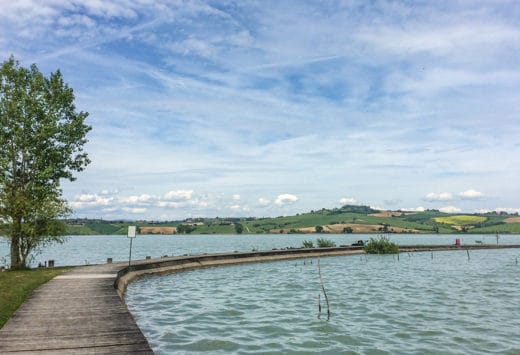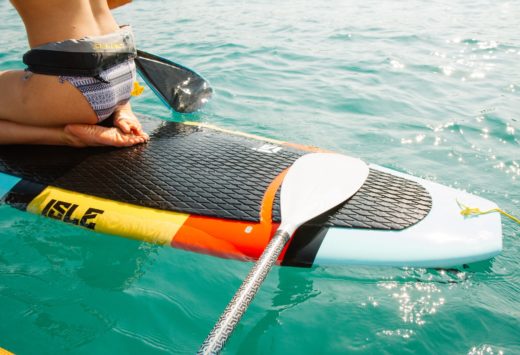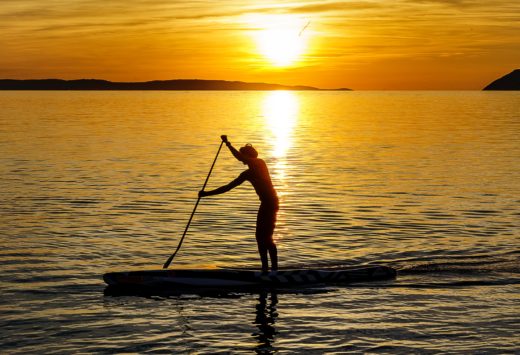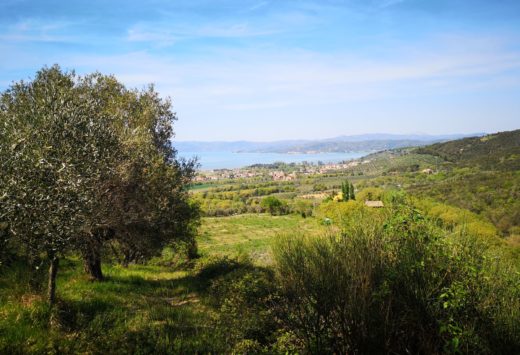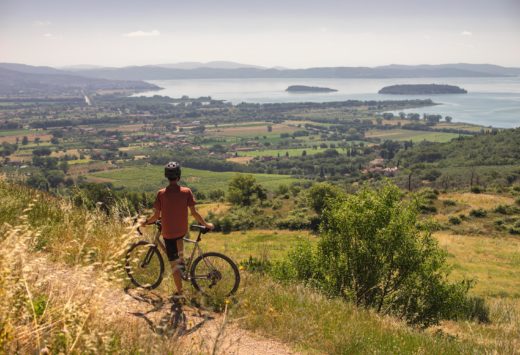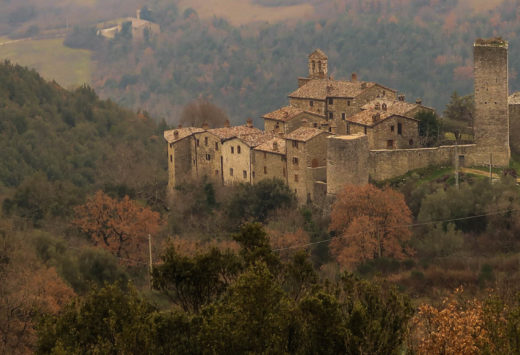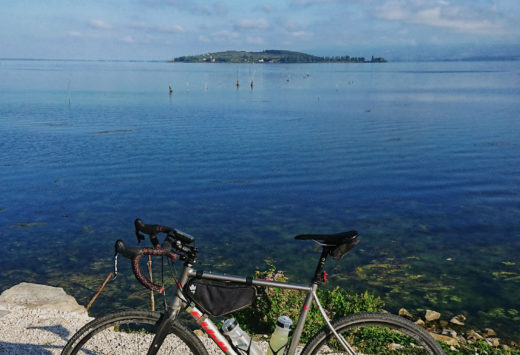Discover Castiglione del Lago, the town, its colours and the Trasimeno islands.
On a promontory overlooking Lake Trasimeno stands an enchanting little town that is steeped in history and where time seems to stand still: wonderful Castiglione del Lago. With over 15,000 inhabitants and located in the province of Perugia, it has been designated amongst the Borghi più belli d’Italia (Italy’s most beautiful towns) due to its exquisite characteristics. Its territory, which in ancient times was considered the fourth of Lake Trasimeno’s islands as the water level was significantly higher then, also includes the gorgeous Isola Polvese, the largest of the islands in the Lake Trasimeno basin.
The central and advantageous position of Castiglione del Lago meant that it was often disputed over the centuries. Etruscan and Roman populations contested it in the first instance, followed, later, by the Tuscan cities and Perugia. It was thus at the centre of several battles and numerous buildings and fortifications were destroyed over time. Over the centuries the city was subjected to various dominations: it was firstly ruled by Frederick II, which conferred moderate stability, then became a fiefdom under the Baglioni family, and then also a Papal State and a marquisate of the Corgna family.
Today it is a town steeped in history and offering breath-taking views over the whole of Lake Trasimeno and its surroundings.
Every year Castiglione del Lago embraces spring in a special way, proudly celebrating it with a traditional festival that has been held for over 50 years, the Festa del Tulipano e di Primavera (The Tulip and Spring Festival). Its exact origin dates back to 1956, when a number of Dutch families of tulip growers settled in the area. They bought plots of land for the cultivation and subsequent sale of these flowers which are still one of the most important symbols of the Netherlands. However, many of the tulips could not reach a stem length long enough to be sold and so the growers began to decorate the town with the beautiful, colourful short-stemmed tulips.
This custom has been maintained over time and passed down to the present day. Every year since then, at the end of April, the town is festooned with colours and releases seductive floral scents for a few days. The balconies and windows of the houses are filled with wonderful flowers, as are the shop windows, streets, alleys and squares. Nowadays, this event is among the most important in Castiglione del Lago. It re-evokes the past with an historical procession accompanied by flag-wavers, musicians and drummers. The residents of Castiglione walk the streets of the town together, wearing marvellous period costumes that enthral and enchant the many visitors. The people who participate in the event every year do so with great pride and heartfelt enthusiasm, keeping the heritage, traditions and history of the village alive: a precious legacy to be treasured over the centuries.
During the event, splendid allegorical floats pass by completely adorned with tulips. Created every year based on a theme, they are flanked during the parade by various city bands. There is also no shortage of historical camps providing entertainment for children. The residents of Magione parade in the guise of great personalities of the past, such as the Marquis Ascanio Della Corgna. The typical taverns of the past reopen, offering tastings of delicious dishes accompanied by a fine glass of local wine and there is an abundance of musical entertainment and game playing. Amongst the games and shows in period costume, concerts and dance performances, performances by street artists and the inevitable Spring Market stalls with the Hobby Fair, you will certainly find lots to do, see and enjoy.
The event also includes the ‘Balconies, Piazzas and Blooming Windows Competition’. The residents of Castiglione compete with each other to create the most beautiful flower displays on the balconies of their homes, in the squares and in the shop windows.
Every year, between late April and early May, for as many as 28 years, the skies of Castiglione del Lago have presented a unique display: a multitude of colourful kites flutter across the sky, driven by the wind and guided by the expert hands of skilful kites-fliers during the Coloriamo i Cieli event. There are always numerous participants who come from all over Italy as well as across Europe, making it an important, internationally-recognised event. It has also been awarded the ‘Heritage of Italy by Tradition’ recognition by the Ministry of Cultural Heritage, Activities and Tourism. This event guarantees fun and entertainment for adults and children alike since kites have always been a symbol of freedom.
The event, which takes place at Eleuteri airport, includes a wide range of numerous activities: from free kite flying, to traction/power kite flying, various educational workshops for children, kite-building workshops, concerts, conferences and even hot air balloon flights! Another event, Voliamo con i libri (‘Let’s fly with books’), is also held daily, dedicated to reading books and numerous exhibits on flying. There are also guided tours to enable visitors to discover the area and its wonders: eco-friendly cycle rides, horse riding and mountain biking, the area’s delicious local products, and performances by street buskers and artists who involve visitors in lots of fun and games.
Thanks to the availability of large spaces, Eleuteri airport also hosts the Meeting di Primavera (Spring Meeting), an international event for professionals and enthusiasts of ultralight/microlight and leisure aviation, a real celebration for pilots! During this annual event, which also takes place between April and May, there are exciting air acrobatics by participants and flying is also possible even for those who have never flown before!
In March, Castiglione del Lago also offers a sporting event that is well known to athletes and the sporting public: Strasimeno. This 58-km ultramarathon is now in its 18th year. Thanks to its intermediate milestones, the full distance circuit need not be covered in full, so that it doubles up as a marathon or half marathon. Anyone wanting a more relaxing excursion can take part in the non-competitive walk, the Strasimeno Family, a route that is also suitable for families. The event is also geared to young people via the Strasimeno Young, which includes races through the streets of the historic centre of Castiglione del Lago created for youngsters.
Summer events involving Castiglione del Lago and other municipalities in the area of Lake Trasimeno also include the Trasimeno Blues Festival. Numerous artists perform blues numbers during this music festival as well as experiment with different musical genres. The concerts are held annually in the squares, with the voices and music of the artists enthralling residents as well as visitors from near and far.
The summer season, which usually runs from June to the end of August, also offers the public one of the longest-running film festivals in Italy, the Roccacinema. This outdoor festival takes place in the picturesque outdoor setting of the Rocca Medievale (Medieval Fortress).
The medieval fortress also hosts the Festival Internazionale del Folklore, which sees a dazzling encounter of culture and traditions between peoples from all over the world.
The end of August ushers in an unmissable event for classical music fans, the Festival di Musica Classica, held in the fascinating location of Palazzo della Corgna. Each year it hosts top notch guest performers, musicians and orchestras paying tribute to the great artists of the past who wrote the history of music.
Porto di Castiglione Del Lago instead hosts the Sagra del Pesce (Fish Festival), the annual event that takes place in the first weeks of August. Here the food and wine stands prepare excellent fish specialties from Lake Trasimeno, the stars on the menus offered during the festival.
Among the typical gastro specialties in Castiglione del Lago, don’t miss out on brustico (smoke-barbecued perch) and tegamaccio, a delicious soup prepared with lake fish or ‘regina in porchetta’: a large carp seasoned with garlic, pepper, salt and fennel and baked in the oven. Or why not try pasta with fish sauce? Taste all these typical, tasty dishes accompanied by one of the excellent local wines.



